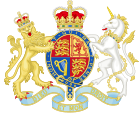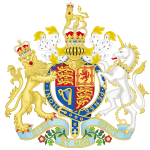- Crown Proceedings Act 1947
-
Crown Proceedings Act 1947 
United Kingdom ParliamentLong title An Act to amend the law relating to the civil liabilities and rights of the Crown and to civil proceedings by and against the Crown, to amend the law relating to the civil liabilities of persons other than the Crown in certain cases involving the affairs or property of the Crown, and for purposes connected with the matters aforesaid. Statute book chapter 1947 c. 44 Introduced by Lord Jowitt Lord Chancellor[1] Territorial extent England and Wales; Scotland;[2] Northern Ireland[3] Dates Royal Assent 31 July 1947 Commencement 1 January1948 Repeal date — Other legislation Amendments Merchant Shipping Act 1995 Related legislation — Repealing legislation — Status: Current legislation Text of statute as originally enacted Official text of the statute as amended and in force today within the United Kingdom, from the UK Statute Law Database The Crown Proceedings Act 1947 (1947 c. 44) is an Act of Parliament passed by the Parliament of the United Kingdom that allowed, for the first time, civil actions against the Crown to be brought in the same way as against any other party. The Act also reasserted the common law doctrine of Crown privilege but by making it, for the first time, justiciable paved the way for the development of the modern law of Public Interest Immunity.
The Act received the Royal assent on 31 July 1947 but did not fully come into force until 1 January 1948.[4] As of 2008[update], it remains substantially in force in the UK.
There remain significant differences between Crown proceedings and claims between private parties, especially as to enforcement of judgments.
Contents
Background
Before the Act, the Crown could not be sued in contract. However, as it was seen to be desirable that Crown contractors could obtain redress, they would otherwise be inhibited from taking on such work, so a petition of right came to be used in such situations, especially after the Petitions of Right Act 1860 simplified the process.[5]
Before the petition could be heard by the courts, it had to be endorsed with the words fiat justitia on the advice of the Home Secretary and Attorney-General.[5]
Similarly, the Crown could not be sued in tort. The usual remedy was for the complainant to sue the public servant responsible for the injury. A famous example was the case of Entick v. Carrington. The Crown usually indemnified the servant against any damages.
Henry Brougham called for equality between Crown and subjects in a House of Commons motion in 1828 but it was to be a further century before the proposal was realised.[6] In 1921 a Crown Proceedings Committee was established and produced a draft Bill in 1927. However, little was done to progress it through parliament and in 1926 there was adverse criticism of state of affairs from the House of Lords[7] and the Court of Appeal.[1][8]
The Act
Actions allowed
Section 1 of the Act allows claims, for which a petition of right would previously have been demanded, to be brought in the courts directly as against any other defendant. However, a petition and fiat still appear to be necessary for personal claims against the monarch.[5]
Section 2 renders the Crown liable as though it were a natural person for:
- Torts committed by its servants and agents;
- Common law duties of an employer to its servants and agents; and
- Common law duties as an owner or occupier of property.
S.2(2) provides that the Crown is liable for breach of statutory duty so long as the statute binds both the Crown and private persons.
S.3 provides for the protection of patents, registered trade marks, design rights and copyrights from breach by Crown servants.
Limitations
S.10 exempted the Crown from actions for death or personal injury caused by members of the British Armed Forces to other members of the British Armed Forces. This section was suspended by the Crown Proceedings (Armed Forces) Act 1987, ss.1-2 with a power for the Secretary of State for Defence to revive it when "necessary and expedient".[9] There was some retrospective litigation after the 1987 Act in which a declaration was made under the Human Rights Act 1998, s.4 that such immunity was incompatible with the European Convention on Human Rights, art.6(1).[10]
Crown privilege and Public Interest Immunity
Section 28 gave the courts, for the first time, the power to order disclosure of documents by the Crown and require the Crown to answer requests for further information. This new power is subject to important qualifications in s.28(2) including the proviso that the Crown can resist disclosure where this could be “injurious to the public interest”. This reasserted the traditional doctrine of Crown privilege but also made the issue justiciable, ultimately giving rise to the doctrine of Public Interest Immunity.
Proceedings abolished
Apart from petitions of right, the Act abolished several ancient writs and procedures:[11]
- Latin informations and English informations;
- Writs of capias ad respondendum, subpoena ad respondendum and writs of appraisement;
- Writs of scire facias;
- Proceedings for the determination of any issue upon a writ of extent or of diem clausit extremum;
- Writs of summons under Part V of the Crown Suits Act 1865;
- Proceedings against the Crown by way of monstrans de droit.
Amendments since royal assent
Ss.5-8 originally covered Admiralty claims but these sections were repealed and replaced by provisions under the Merchant Shipping Act 1995.
S.9 originally excluded claims arising from the operations of the Post Office, including telegraphic and telephone services, other than the loss or damage of a registered letter. These provisions were repealed and replaced by the Post Office Act 1969.[12]
References
- ^ a b Street (1948) p.129
- ^ s.52
- ^ Crown Proceedings (Northern Ireland) Order 1981, SI 1981/233
- ^ SI1947/2527, art.1
- ^ a b c Bradley & Ewing (2003) pp700-701
- ^ Crowther, J. G. (1965). Statesmen of Science. London: Cresset Press. pp. 65.
- ^ Adams v. Taylor [1946] AC 543
- ^ Royster v. Cavey [1947] KB 204
- ^ Bradley & Ewing (2003) p.758-759
- ^ Matthews v. Ministry of Defence [2002] All ER (D) 137 (Jan)
- ^ Ss.21, 23/ Sch.1
- ^ c. 48, Sch. 11 Pt. II
Bibliography
- Bradley, A.W. & Ewing, K.D. (2003). Constitutional and Administrative Law (13th ed.). London: Pearson. ISBN 0582438071.
- Jaffe, L. L. (1965). Judicial Control of Administrative Action. London: Little Brown. pp. pp198–212.
- Street, H. (1948). "Crown Proceedings Act, 1947". Modern Law Review 11 (2): 129–142. doi:10.1111/j.1468-2230.1948.tb00078.x.
United Kingdom legislation Pre-Parliamentary legislation Acts of Parliament by states preceding
the Kingdom of Great BritainActs of the Parliament of England to 1483 · 1485–1601 · 1603–1641 · Interregnum (1642–1660) · 1660–1699 · 1700–1706
Acts of the Parliament of Scotland
Acts of the Parliament of Ireland to 1700 · 1701–1800Acts of Parliament of the
Kingdom of Great Britain1707–1719 · 1720–1739 · 1740–1759 · 1760–1779 · 1780–1800
Acts of Parliament of the United Kingdom of
Great Britain and Ireland and the United
Kingdom of Great Britain and Northern IrelandChurch of England Measures Legislation of devolved institutions Acts of the Scottish Parliament
Acts and Measures of the Welsh Assembly
Acts of the Northern Ireland Assembly / of the Northern Ireland Parliament
Orders in Council for Northern IrelandSecondary legislation Categories:- United Kingdom Acts of Parliament 1947
- English laws
- Sovereign immunity
Wikimedia Foundation. 2010.

